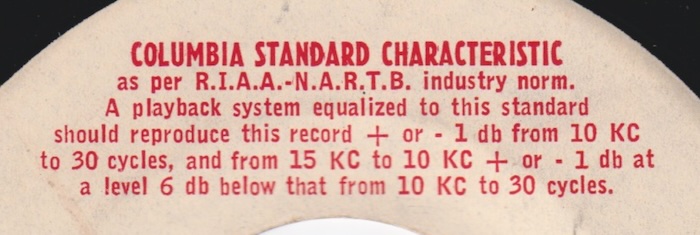Things I learned on Phono EQ curves, Pt. 20
EQカーブの歴史、ディスク録音の歴史を学ぶ本シリーズ。前回 Pt.19 では、1950年代中盤〜1970年代の代表的なカッティングアンプと内蔵録音フォノイコの取説や回路図を調査し、どのように RIAA 録音カーブが実現されていたかを学びました。
On the previous part 19, I learned how the RIAA recording curve was accomplished with various recording amplifiers and built-in recording EQs from the mid-1950s to 1970s.
今回の Pt.20 では、1954年前半に RIAA 録音再生特性の標準規格化が策定されたあと、米国の各レーベルがどのように RIAA に移行していったか、その痕跡を探すと同時に、過去〜現在における EQ カーブ調査の系譜についてもみていきます。
In this Pt. 20, we’re going to look for traces of how the U.S. labels migrated to RIAA, after the standardization of RIAA Recording and Reproducing Standards in early 1954, as well as to examine the genealogy of the studies and researches on EQ curves, from past to the present.

SIDE II, ZRD 431-1A (from my own collection)
COLUMBIA STANDARD CHARACTERISTIC as per R.I.A.A. — N.A.R.T.B. industry norm.
A playback system equalized to this standard should reproduce this record ± 1 db from 10 KC to 30 cycles, and from 15 KC to 10 KC ± 1 db at 6 db below that from 10 KC to 30 cycles.

